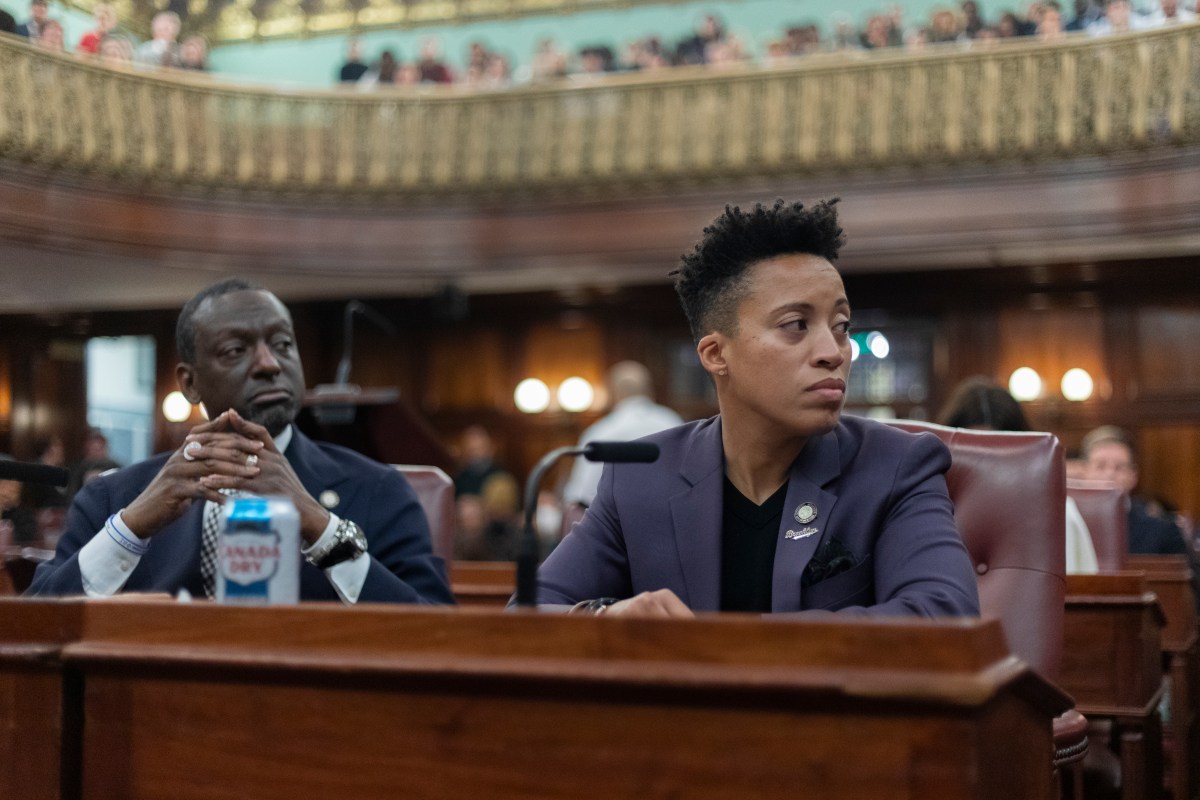The city plans to reduce carbon emissions in its food purchases across government agencies by 33% by 2030, Mayor Eric Adams announced Monday, while releasing a report showing household food consumption makes up 20% of the Big Apple’s greenhouse gas emissions.
The annual report, called the “Inventory of New York City Greenhouse Gas Emissions,” revealed that food consumption is the third largest contributor to the city’s greenhouse gas emissions. It came behind buildings, which accounted for 34%, and transportation, making up 22%, according to City Hall.
The emissions from household food consumption primarily comes from animal products like meats, poultry, fish, eggs and dairy.
The report is designed to show the main culprits of the city’s carbon emissions and its progress in reducing them, according to the Mayor’s Office of Climate & Environmental Justice (MOCEJ) website.
The mayor, an avowed vegan who sometimes eats fish, said the report shows that further shifting city agencies to plant-based food is a key part of reducing its carbon footprint. That’s an effort the Adams’ administration has already undertaken by serving plant-based meals as the default option at the city’s Health + Hospitals (H+H) system and making them the primary item on public school menus every Friday.
“This new emissions report shows us that plant-powered food isn’t just good for our physical and mental health, but good for the planet as well,” Adams said in a statement. “We’ve already made great strides in reducing our food emissions by leading with plant-based meals in our public hospitals and introducing Plant-Powered Fridays in our public schools. Now, we know we need to go further. That’s why today, we’re committing to reducing the city’s food-based emissions at agencies by 33 percent by 2030.”
The report contains greenhouse gas emission data the city has gathered between 2005 and 2021, according to the mayor’s office, and it’s the first to include data on emissions related to the consumption and production of food. The data was modeled by EcoDataLab as a part of C40 Cities Climate Leadership Group’s initiative working with cities to better understand their carbon emissions and how to reduce them.
In order to reduce food purchase emissions 33% by 2030, a City Hall spokesperson said, the administration will continue moving in the direction of buying more plant-based and lower-emission food products — such as fruits, vegetables, grains and legumes — across its agencies. It’ll also set caps on the amount of meat and dairy it purchases.
At a Monday morning press conference where Adams unveiled the new emissions reduction goal, Kate Mackenzie — executive director of the Mayor’s Office of Food Policy — said some caps on meat purchases were already set last year, when the mayor updated the city’s food standards.
“Some of what those standards do is set maximums for the number of times that red meat can be served each week and really introduces the plant-based proteins and a floor for that, really encouraging chefs to go farther and certainly working with our vendors to introduce those new standards,” Mackenzie told reporters at H+H’s Culinary Center in Brooklyn.
“So, it’s really the caps on meat,” she added. “And again, as mayor mentioned, we have been for years introducing Meatless Mondays, but also, whether it’s with our schools, in the public hospital system and across other city agencies, plant-powered Fridays is a clear way to drive those changes.”
In addition to the administration’s own food-based emissions reduction target, it’s calling on the private, industrial and nonprofit sectors to cut their greenhouse gas emissions connected to food purchases by 25% by 2030 with the Plant Powered Carbon Challenge.
Read more: Rowan Wilson Poised for Chief Judge Role After Hearing



































